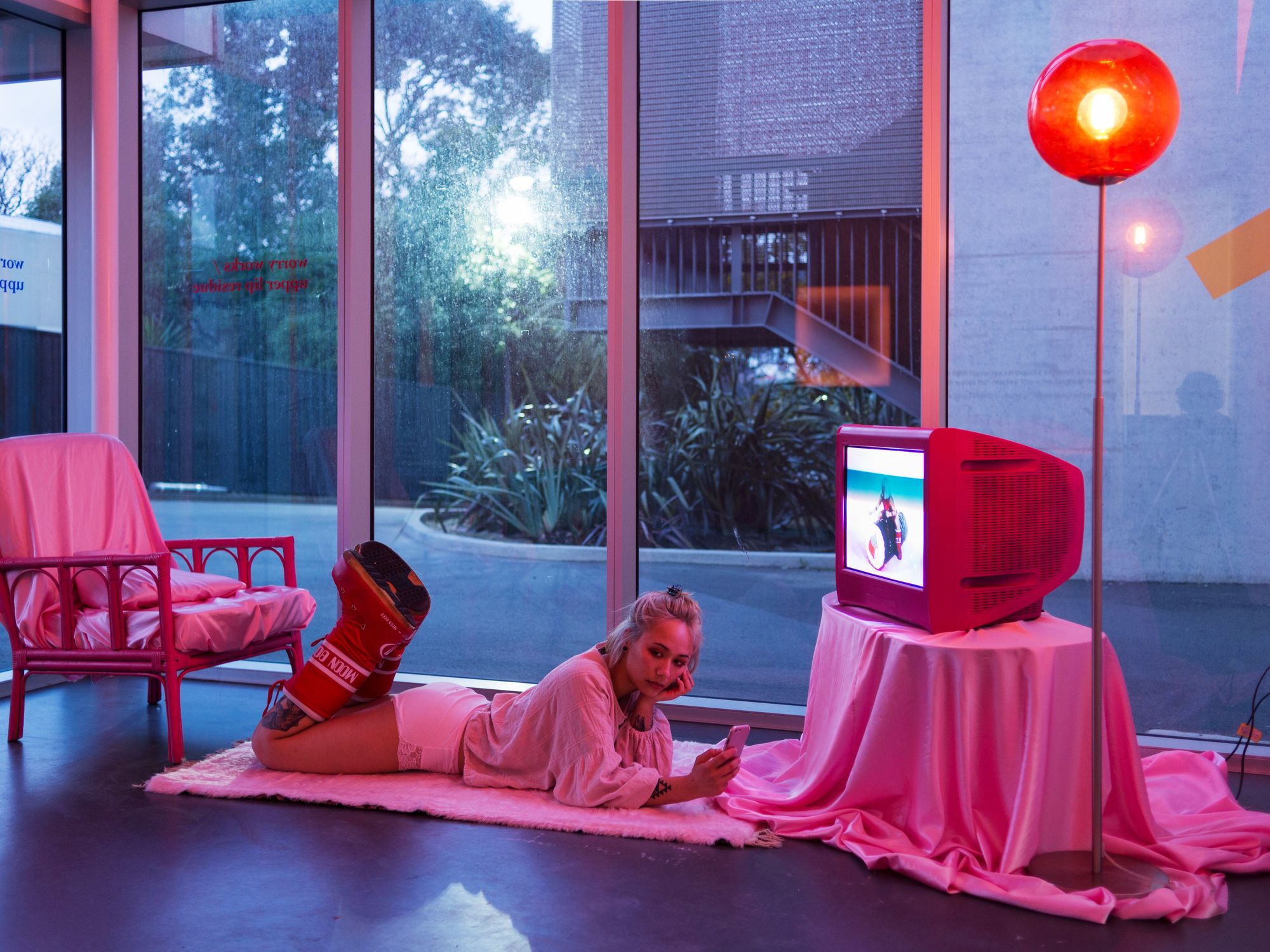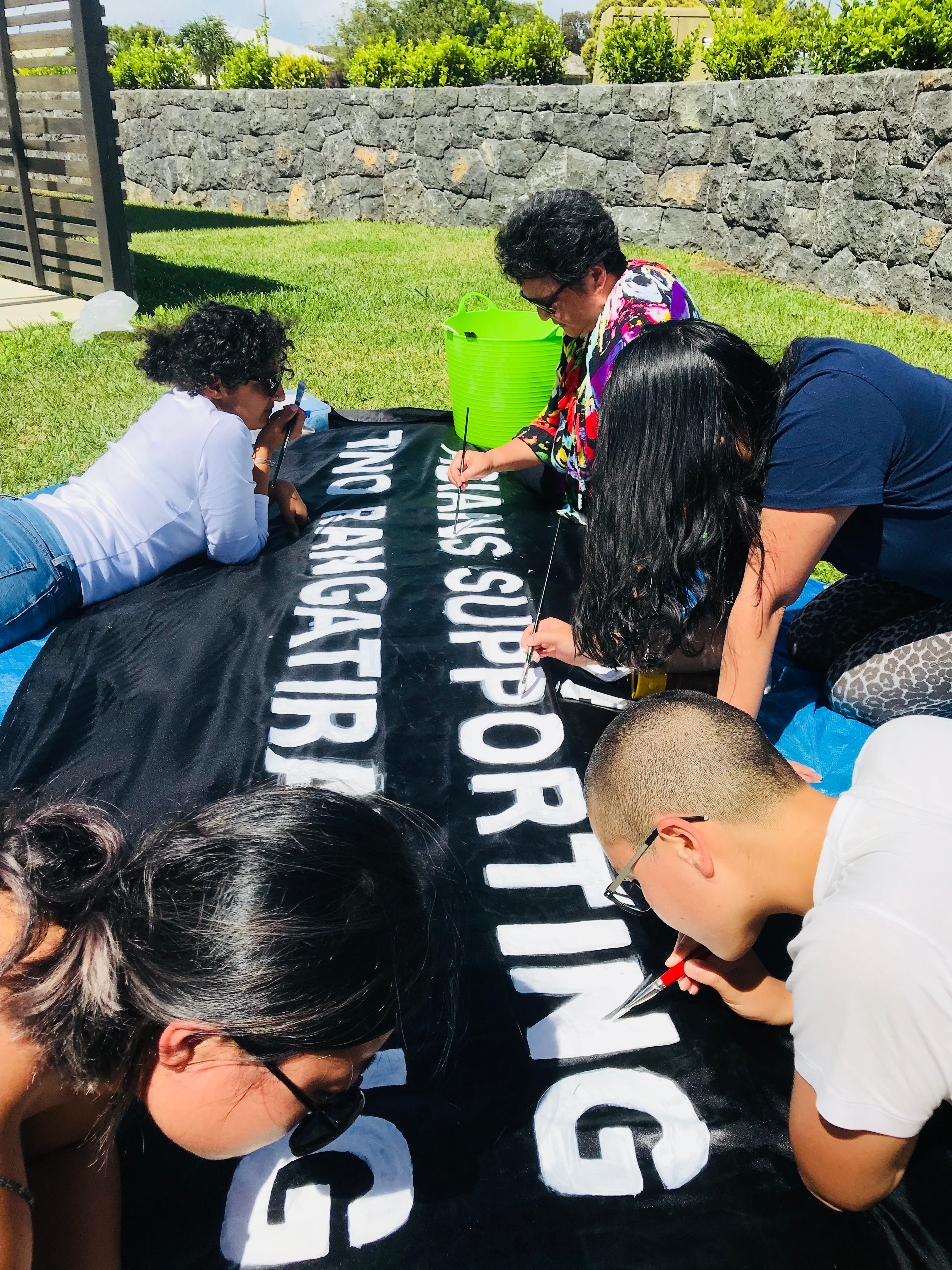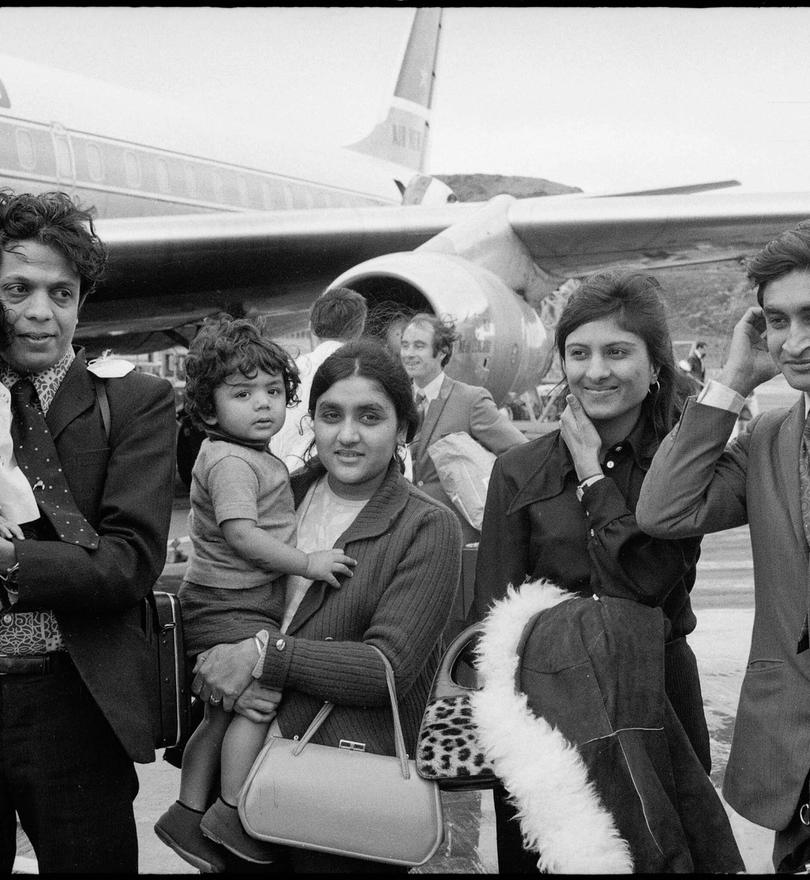
When is politics just a pose? Sharing their experiences as members of Asians Supporting Tino Rangatiratanga, Mengzhu Fu and Qianye Lin reflect on the role — and responsibilities — of artists as Asian tauiwi who call Aotearoa home.

Painting an ASTR banner together, February 6, 2018
Courtesy of ASTR
Over the last few years, we have witnessed a proliferation of Asian artistic creativity and brilliance as spaces are fought for and carved out for us to tell our own stories. Finally, we see growing engagement with, and understanding of, te Tiriti amongst ourselves. As two members of Asians Supporting Tino Rangatiratanga (ASTR) with connections to the art world, we want to offer our reflections, provocations and invitations. We see potential in ourselves, in our Asian artist communities, to do better in taking our responsibilities to honour te Tiriti seriously — through action, not just gestures.
We see art in an expansive sense, not limited to the art world governed by galleries and museums, but part of everyday life and present within all social and political movements. The mundane work of designing posters, painting banners and placards, taking photos and the crafting of communications is art. Organising is a creative urge.
Our own origin story involves collective art-making: the Asians Supporting Tino Rangatiratanga movement began to manifest through the first banner painted and taken up to Waitangi in 2010. This idea, this banner, was inspired by Jenny Lee-Morgan, who wrote Jade Taniwha (2007), and Wai Ho’s Mellow Yellow zine (around 2005). This banner was looked after by Young Asian Feminists Aotearoa, a social support network that involved many Asian feminist, Trans and Queer artists and musicians from 2010 to around 2014. The next eight issues of Mellow Yellow were put together by many hands — it was a way of finding each other. The banner was, too: the same message repainted, together, after we formally became a group in 2016. That same year, it was through Alice Canton’s theatre production White/Other that some of us met Aaryn Niuapu and Alesha Hulme-Niuapu, whom we worked closely with, and who later set up Racial Equity Aotearoa. Art plays a role in relationship building.
In 2018, ASTR and the Asian Law Students Association organised a public talk with the late Dr Moana Jackson to coincide with the opening weekend of the Asian Aotearoa Arts Hui. Many of the hui attendees spent their Saturday evening listening to matua Moana share histories of mutual care between Māori and Chinese in the face of white supremacist violence in Ōtepoti and colonial conscription in Waikato. Storytelling is an art in itself, and matua Moana galvanised the audience that night — leading to the formation of ASTR Pōneke.
Moana’s talk reminded us that we live in a country with a colonial government, founded on breaches of te Tiriti o Waitangi. As migrants, the moment our relationship with this land begins, we also enter into a relationship with tangata whenua and te Tiriti. This comes with expectations and responsibilities. As matua Moana explained, upon entry to Aotearoa, “this is the basic kawa: that you will respect the rights of others, you will respect the land and you will work together to make this a better place.” It is our responsibility to uphold te Tiriti, which includes acting in solidarity with tangata whenua-led initiatives to address Treaty breaches, fighting for tino rangatiratanga and constitutional transformation, as well as educating each other.

Moana Jackson with members of ASTR in Tāmaki Makaurau, 2019
Courtesy of ASTR
We cannot stop at having ‘awareness’, we must put our beliefs into practice. These days, we are familiar with the language used in decolonial and anti-racist discussion, thrown around on social media and by art institutions. But sometimes fluency in this language is not enough, and does not equate to serious reflection on how we might be participating in the structures that we are criticising. The way we work as arts practitioners is not free from neoliberal individualism, which sees politics and activism not only reduced to slogans, but appropriated into creative content, commodified and used to sustain individual and institutional power. Often the media and institutions of our era don’t quite get the point — presenting critiques of the Eurocentric gaze that not only centre it, but pander to and perform for it. We get representation that claims to oppose the canon, but it never truly follows through with any commitment to destroy its power.
Working under these conditions, it is important that we keep thinking about who we are making work for, whose gaze we are responding to, whom we are accountable to. Keep reflecting on your political artistic voice — does it only harbour more power for you and Eurocentric institutions, or does it have greater impact?

Left: Flyer for a te Tiriti workshop hosted by Asians Supporting Tino Rangatiratanga and the New Zealand Chinese Association (Auckland), 2021
Right: Asians Supporting Tino Rangatiratanga te Tiriti workshop, 2018
Courtesy of ASTR
We are facing fascist resurgence, climate crisis, heightened transphobia and homophobia, and extreme wealth inequality. We have to fight for the next generations as if the future depended on it. Because it does. We must keep in mind the future that we dream about: reciprocal, collectively affirming, healing, caring, supportive and mutually accountable. We must keep in mind the ways in which we can take part in moving towards a constitutionally transformed Aotearoa. Visions for this transformation are laid out in the Matike Mai Aotearoa report; visions based on tikanga, He Whakaputanga, te Tiriti and the United Nations Declaration on the Rights of Indigenous Peoples.
As artists, we are well positioned to imagine and create liberatory alternatives, for and with each other. Art has the power to bring people together, to be part of our healing. Art can be a method for counter-archiving, as conceptualised by QTBPOC scholars Jin Haritaworn, Ghaida Moussa and Syrus Marcus Ware — ‘to challenge colonial logics of time and place’ and refuse the erasure of Queer and Trans Indigenous, Black and people of colour who are often at the forefront of social and political movements.1 Art has the power to instigate change and reach people at an emotional or spiritual level. We need art and artists, we need to engage people through a multitude of methods and fight for a better future on all fronts. The work of artists can be powerful in the imagination realm — the space that Matike Mai invites us to — to dream of relations and political structures beyond this colonial reality.
⁂
As we strive towards dismantling colonialism and racism in Aotearoa, here are some questions for all of us in the Aotearoa Asian arts community to reflect on:
- How can we, as tauiwi Asian artists, fulfil our te Tiriti responsibilities? What does it mean to support tino rangatiratanga and act in solidarity with tangata whenua?
- How does this look different than using support for tino rangatiratanga as art content, and to advance our own careers?
- How can we use our skills, craft, relationships, networks and resources for constitutional transformation?
- How can we run less on competition and scarcity, and more on abundance, sharing and collaboration?
- Do you participate in or reject patterns of hoarding funding or power? If you’re applying for funding, are you the right person to be doing this project? Are you taking funding from others, with lived experience, whose projects you could support instead?
- How can we refuse liberal multiculturalism that superficially ‘accepts’ Asian cultures to enrich dominant Pākehā culture? How can we resist the use of our art practices to fulfil others’ diversity ticks?
- How do you discern when you are extracting from grassroots social movements, versus working in their service? Who are you accountable to? What are the communities you are part of? What structures of harm might you be implicated in?
- When you’re called to account, how will you respond? Will you centre those harmed and seek to remedy those harms? Are you aware of self-defensive behaviours that might get in the way, such as self-victimising, focusing on your own reputation, or silencing the people trying to hold you to account?
- What kind of archive does your work leave behind for future generations?



